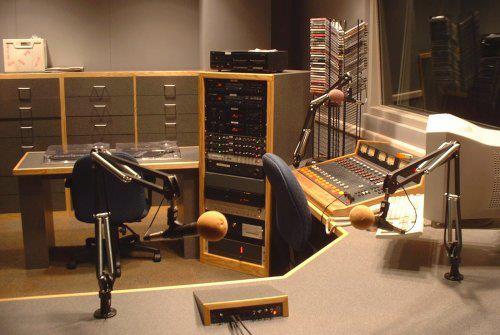This semester two journalism students are bringing radio back to campus, but in a more accessible and modern way.
“No one really listens to the radio today, and people listen how they want, when they want,” said Cody Beavers, a junior journalism major and co-founder of SMU Sound.
Zoe Mattioli, a senior journalism major, and Beavers bonded over their interest in radio and collaborated in January 2015 to produce a website with a series of podcasts. They have posted just two podcast to the site so far, but their goal is to produce weekly shows and highlight some of the music by SMU students.
The first podcast on their web site is titled Origins #1. For seven minutes and 33 seconds, Beavers and Mattioli discuss why they started SMU Sound and their future plans for the show. Beavers and Mattioli explored ideas of show topics, including a sports section and opinion interviews about certain Daily Campus stories.
“Doing a podcast about their creation of a new radio program to SMU is really exciting. Podcasts are booming in journalism these days,” said Jake Batsell, an SMU journalism professor and expert in digital studies.
SMU Sound hopes to provide another venue for students to receive campus news and updates. The program’s goal is to generate emotionally engaging content for the SMU community.
Last week Beavers and Mattioli posted a second podcast, Origins #2. During this podcast Beavers and Mattioli went around campus interviewing students from all different departments of study. Beavers and Mattioli asked each student, “if SMU had a radio show, would you listen to it?” Although the answers varied, Beavers and Mattioli both said they were shocked to hear how many students said yes, especially if the radio show was online.
This March, Mattioli is launching her own podcast on the website titled “SMUsic”, which will air music and instrumental pieces by SMU Meadows students. Last semester, Mattioli had success with creating playlists for The Daily Campus and wants to involve music in this new media project.
“I think all students want their voice heard, especially original songs,” said Maggie Harper, a junior music therapy major.
Harper believes that this podcast series will help promote student musicians even more. “Using a podcast would be a wonderful way to continue building that musical community,” said Harper.
Harper also believes it is important to spread the word about SMU Sound among other SMU students, besides Meadows majors.
“I think appealing to non-meadows students would be a vital piece of this podcast’s success,” she said.
Unlike the school’s previous radio station, SMU Sound has no funding and no studio space or equipment to work with. SMU Sound operates solely by Beavers and Mattioli on their computers and demonstrates what radio is like in this day and age.
Radio on SMU’s campus dates back to 1947, when it premiered as part of the Department of Speech.

The original station, KSMU, first began as a carrier-current station, then later moved to an over-the-air FM station. Unfortunately, airing over FM frequency didn’t last long and the University chose to hand the station back to a carrier-current station.
In 1989, KSMU left the media scene at SMU, but came back six years later as KPNI, according to the Daily Campus.
The station “operated under the auspices of the Student Association until 1995, when it became part of the Student Media Company, Inc. until 2002”, said Richard Lytle, the former Executive Director of Student Media at SMU.
In 2002, the radio station joined the Division of Journalism, which thought the station would be a good addition for its media convergence curriculum, according to the Daily Campus. Around 2003, the station began broadcasting over the Internet.
KPNI went silent in 2011 due to a lack of funding.
Mattioli said that SMU Sound has no affiliations with the former station KPNI. “ We don’t have any access to the KPNI website, even if we wanted to re-brand,” stated Mattioli.
Beavers and Mattioli came up with the name SMU Sound themselves, which also fits with other SMU journalism productions like “SMU TV” and “SMU Live”..
SMU Sound’s availability on SoundCloud allows students to listen to the cast whenever and however they choose. SoundCloud is a website that provides an “audio platform that enables sound creators to upload, record, promote, and share their originally created sound,” according to its website.
For more information or just to hear the latest campus news and music, visit SMU Sound’s web site and follow their Twitter page @SMUSOUND!








